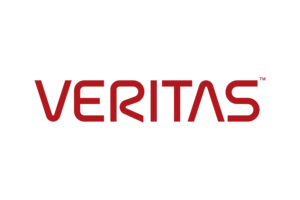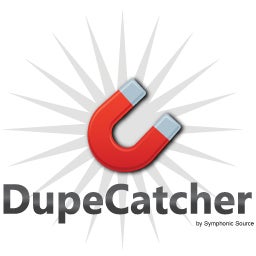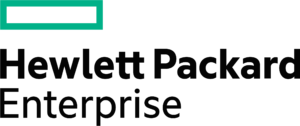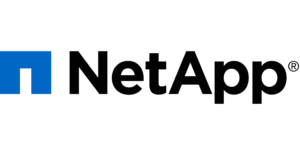As a growing number of companies enter into the worlds of machine learning, artificial intelligence, and other big data-powered technologies, data quality and data quality tools have become a top priority for enterprise networks. A variety of data quality tools exist to improve the accessibility and legibility of enterprise data, but data deduplication software is perhaps one of the most important for storage and backup optimization in big data environments.
Read on to learn about some of the top deduplication software solutions on the market and how you can reap the tools’ top benefits for your own enterprise.
More on Big Data: Big Data Trends and The Future of Big Data
Data Deduplication Software for Enterprises
- What is Deduplication Software?
- Important Deduplication Software Features
- Who Needs Deduplication Software?
- Top Deduplication Software Providers
- Enterprise Benefits of Deduplication Software
What is Deduplication Software?
With a large number of users, hardware, and software distributed across a network, most enterprises will find that several dozen copies of the same file or data set exist on the network and take up unnecessary storage space. Deduplication software works to find these duplicate file or data instances and eliminate the excess so that there is one master copy. In other instances where the data previously existed, the process of data deduplication creates pointers that direct users toward the remaining copy that matches what they’re looking for.
Depending on the tools you use and the results you’re hoping to achieve, different types of deduplication will help you to eliminate redundant data across your network:
File-Level Deduplication
The simplest type of deduplication, this approach eliminates duplicate file copies, leading to single instance storage (SIS).
Block-Level Deduplication
This approach gets more granular than file-level deduplication, finding and reducing matching blocks of data, regardless of the different files where they’re found. Block-level deduplication tends to free up more space than file-level deduplication.
Fixed Deduplication
This type of block-level deduplication breaks data into blocks of all the same size, with little to no regard for the actual contents of each block. Fixed deduplication saves unique blocks and eliminates duplicate blocks simultaneously.
Variable Deduplication
The variable approach to block-level deduplication uses context when breaking data into blocks. This means that the blocks can all come in different lengths, but are divided based on their unique properties.
Source Deduplication
One of two locations where deduplication software can be deployed, source deduplication is where data is deduplicated in primary storage before it travels to the backup system. This approach takes less time and uses less bandwidth, but it requires more processor resources and is typically more difficult to implement than target deduplication.
Target Deduplication
The more common of the two deployment location approaches, target deduplication deduplicates data after it has reached the backup system. It’s usually easier to deploy than source deduplication and comes in two different subcategories: inline deduplication and post-process deduplication.
Inline Deduplication
Inline is the type of target deduplication in which dedupe happens before the backup copy is written on disk or tape. It requires less overall storage space than post-process, but it often takes longer to complete the backup process.
Post-Process Deduplication
Post-process is the type of target deduplication that takes place after the backup has been written to disk or tape. This process is often faster than inline deduplication, but it requires additional storage space to complete.
Local Deduplication
Local deduplication is when deduplication happens in only one node, without consideration for duplicate data in other network nodes.
Global Deduplication
Global deduplication is when deduplication efforts are applied across all nodes on a network, ensuring the most accurate, comprehensive deduplication results.
More on How Deduplication Works: Networking 101: Understanding Data Deduplication
Important Deduplication Software Features
Before your organization selects a deduplication product for your network optimization goals, ask yourselves the following questions:
- Cross-platform integrations: Does this solution integrate with other relevant data platforms? Can you connect your CRM and/or ERP platforms to optimize those data sets?
- Data matching algorithms: What kinds of data matching does this tool offer? Can it handle both structured and unstructured data? Does it use machine learning or other algorithms to find data matches?
- Data masking and security features: Does this platform offer data masking or other security solutions that protect personal and otherwise sensitive data from unauthorized users?
- Data and file recoverability: Will this tool allow you to recover data and files that are accidentally eliminated? Is there a record of dedupe actions available to admin users of the tool?
- Fuzzy matching: Does the tool offer fuzzy matching, or the intuitive ability to identify texts and other data that are nearly identical?
More on Network Security: Managing Security Across MultiCloud Environments
Who Needs Deduplication Software?
Enterprises of virtually any size and specialty can benefit from deduplication software, but these tools are particularly advantageous for organizations that find themselves in these scenarios:
Dealing with Large Amounts of Distributed Data
For companies that store important customer and strategic data across several different locations in their network, deduplication helps to save space and prevent redundancy across platforms. Deduplication can be particularly useful for organizing personnel files in CRM, ERP, and HR platforms.
Acquiring New Data Assets
When companies are going through the mergers and acquisitions (M&A) process, they don’t typically know the exact contents of the assets they’ll gain from the deal. After the fact of acquisition, deduplication can help organizations to clean up new data, optimize storage space, and quickly merge that data into existing company assets.
Looking for Cost and Space Savings
The primary reason that most companies opt into deduplication software solutions is that they are looking for a way to save money and avoid upgrading their network storage.
Handling Data Backup and Recovery
If your company does a lot of data backup and recovery work, deduplication software can simplify your work to make sure that data is only backed up one time.
Data Management and M&A: What is a Virtual Data Room?
Top Deduplication Software Providers
Talend Data Quality 
Talend Data Quality is one component of Talend’s Data Fabric tool that focuses on cleansing and optimizing data sets, while also providing data masking and other security features throughout the data improvement process. One of the many reasons why users enjoy using Talend for deduplication and other data quality needs is because its data recommendations are machine learning-powered, which further automates the data cleansing process and lessens the chance for user error. User-friendliness is a top priority in this tool, with a highly praised self-service interface and data profile graphical representations that make data analytics more visual for less technical administrators.
Features:
- Machine learning-enabled deduplication, validation, and standardization
- Data enrichment via merges with external sources, such as postal validation codes and business identifications
- Built-in masking for sensitive data and compliance regulations
- Machine learning-powered data quality recommendations
- Self-service interface
Top Pro: The open-source, Java-based format makes it simple for developers to custom-code their data solutions.
Top Con: Most analytics features are only available via third-party tool integration.
Barracuda Backup 
Barracuda Backup offers several different data quality products, but its inline deduplication is a top feature across the Barracuda Backup line. It’s designed to deduplicate data as it is received, which ultimately saves time during the data backup process on your network. Barracuda uses block-level deduplication but opts for the trending variable block deduplication style, setting blocks according to data type and optimal levels of deduplication. Although Barracuda most prominently discusses its local deduplication features, global deduplication is also available and formulated to work well with cloud storage infrastructure. Beyond its core deduplication features, Barracuda Backup also includes replication, unlimited cloud storage, security, near-continuous data protection, and offsite vaulting.
Features:
- One step, inline deduplication methodology
- Instant replication with faster offsite protection
- Source, target, and global deduplication offerings
- Variable block, application-aware deduplication for specific data set analysis
- Barracuda hardware provides variable block deduplication without loading the CPU and disk resources
Top Pro: Users appreciate the strong backup offered for Microsoft and Vmware hosts.
Top Con: Some users have commented on the difficulty of accessing and using Barracuda’s network configuration resources.
Veritas NetBackup 
Veritas NetBackup touts itself as the #1 data backup and recovery solution in the world, with 87% of the Fortune Global 500 on record as customers. Deduplication is one of many of NetBackup’s core data protection features, which include end-to-end deduplication, migration support, Kubernetes orchestration, and disaster recovery. NetBackup is a particularly strong solution for enterprises with highly distributed network technologies and infrastructure. The tool works to support a variety of workloads, virtual machines, containers, hybrid cloud setups, and multicloud setups.
Features:
- Media server, client, and NetBackup appliance deduplication options
- NetBackup Cloud Catalyst for cloud data dedupe and upload
- Hardware independence and flexible licensing
- SAN data transfer and LAN control transfer for VMware backups
- File and OS-level restore solutions available
Top Pro: Veritas offers detailed documentation to their clients, particularly for different configuration approaches.
Top Con: Users have experienced management difficulties due to the lack of a centralized management console.
DupeCatcher 
DupeCatcher is a tool by Symphonic Source that is specifically designed for Salesforce data and records management. The focus is on deduping data as it enters into Salesforce records, preventing duplicate data at the point of entry. Because DupeCatcher focuses on deduping new data and less on reviewing duplicates in existing data, the tool is best used in partnership with Symphonic Source’s other Salesforce data management tool, Cloudingo. DupeCatcher is free through the Salesforce AppExchange partnership, and Cloudingo is free during a 10-day trial period.
Features:
- Multi-object compatibility in Salesforce
- Duplicate monitoring for manual record creation, converted and updated existing records, and records created via web forms
- Customizable filters and rules for duplicate detection
- Codeless filter and rule creation
- Merge and convert functionality
Top Pro: The system is considered user-friendly and prevents several user errors, with pop-ups that alert users before a duplicate record is entered.
Top Con: This solution lacks certain advanced features, such as mass deletion and legacy record deduplication. Again, DupeCatcher works best in tandem with Cloudingo.
HPE StoreOnce 
HPE StoreOnce is a family of backup storage hardware and software-defined appliances that work to optimize storage space and data quality in hybrid cloud environments. Their deduplication software works as an embedded deduplication solution in StoreOnce tools, offering inline deduplication that can be embedded in more HPE products as an enterprise scales. Although this deduplication solution depends on HPE products where it can be embedded, it offers a unique strength in its federated deduplication strategy. HPE developed federated deduplication to enable the movement of data across various HPE systems without rehydrating the data, which makes it possible to scale HPE StoreOnce tools without redundant deduplication efforts.
Features:
- A portable engine that can be embedded in multiple HPE products, eliminating the complexity of first-generation deduplication
- Patented algorithms and features designed by HP Labs to maximize backup and restore performance
- All HP StoreOnce Backup Systems include HP StoreOnce deduplication technology
- Optimized in-line process for enhanced performance
- Potential to integrate with choice of backup and recovery software
Top Pro: This tool manages file uploads and continues to query the backup repository, even with large amounts of data to manage.
Top Con: HPE StoreOnce Catalyst Stores do not offer native replication. Users rely on third-party software to backup their files from primary StoreOnce to secondary StoreOnce.
RingLead Cleanse 
RingLead Cleanse is one of several tools offered in the RingLead Data Orchestration Platform, a tool that seeks to help business users to unify, cleanse, analyze, and route data to appropriate locations within the network. The Cleanse tool works to prevent “dirty data” from staying inside company databases, particularly CRMs. With several merging, batch, cross-object, and mass deduplication features, RingLead Cleanse is a favorite for organizations that are working to join disparate data sources after major organizational changes like M&As.
Features:
- Flexible merging rules through merging module
- Custom object and cross object deduplication
- Mass updates and deletions available
- Bulk lead-to-account matching and batch normalization
- Flexible fuzzy matching with RingLead fuzzy matching criteria
Top Pro: Users appreciate the simple interface and integrations with tools like Salesforce and Marketo.
Top Con: Users cannot build custom logic, requiring them to build each scenario under different “or” statements.
NetApp ONTAP 
NetApp ONTAP functions as an enterprise data management tool for hybrid clouds in particular. The solution incorporates several protection, resilience, and security features as well, but it particularly shines in the area of data set optimization. Some of the primary data quality features that ONTAP offers include inline deduplication, compression, compaction, space-efficient clones, and advanced drive partitioning for increased usable capacity for enterprise storage.
Features:
- Can be applied to new data or to data previously stored in volumes and LUNs
- Application and protocol independent
- Operates on NetApp or third-party primary, secondary, and archive storage
- Works on NetApp AFF, FAS, and E-Series storage systems
- Byte-by-byte validation
Top Pro: Many users appreciate the multiple storage solutions offered by NetApp, as well as clustered storage.
Top Con: Dedupes sometimes run at inefficient times that increase CPU overhead for system users.
Data Ladder DataMatch Enterprise 
Data Ladder is a data quality management company that focuses on data matching, preparation, cleansing, profiling, enrichment, standardization, and deduplication requirements. Their DataMatch Enterprise tool is likely their most popular, offering fuzzy matching, machine learning-powered data analysis, command line editing, and several API-enabled additional features. Although Data Ladder emphasizes the importance of cleansing, merging, and otherwise optimizing your data, they also focus on preserving data, explaining how their in-memory processing solution allows users to test deduplication strategies while preserving original data and export strategies.
Features:
- Seamless integration with MongoDB and Hadoop-based databases
- A mix of established and proprietary matching algorithms
- Visual, code-free data matching
- Semantic matching for unstructured data
- Support for disparate data sources for record linkage
Top Pro: Users appreciate that any source and type of data can be analyzed and matched, even from sources like ODBC connections, CSV files, and JSON files.
Top Con: With its connectivity to public cloud and relationships to third-party orgs, some users have concerns about their data’s security.
DQ Global 
DQ Global is a smaller provider on this list that focuses almost exclusively on dedupe solutions for Microsoft products. As a Microsoft partner, their top products focus on cleansing and optimizing data in Microsoft’s Dynamics CRM and Excel. Although their product offerings and Microsoft specialization limits them to a very specific clientele, their consulting, training, and outsourcing solutions uniquely help users with frequent DQ-staffed support.
Features:
- Primarily partners with Microsoft platforms and solutions
- Dynamics CRM deduplication and cleansing
- Studio data management engine
- On Demand Web Services and APIs
- Excel plugin for spreadsheet data quality management
Top Pro: DQ Global offers customizable customer support, with consulting, training, and outsourcing assistance.
Top Con: Solutions are fairly limited to Microsoft software and platforms.
Other Data Quality Solutions: Best Data Quality Tools & Software
Enterprise Benefits of Deduplication Software
Deduplication software offers the best solution for automating data quality across an enterprise network. Through deduplication and the consequent decrease in redundant data, you can expect to see these benefits almost immediately:
- Cost optimization through decreased storage space requirements
- Improved bandwidth and network performance
- Increased efficiencies for disaster recovery
- More uniform data sets across platforms
The last point in this list is crucial because data quality initiatives are ultimately about making data both accessible and operational for core employees. Improved data quality through deduplication not only optimizes your network’s infrastructure but also improves the overall data management experience for your network users.











